The Changing Landscapes of Internal Displacement
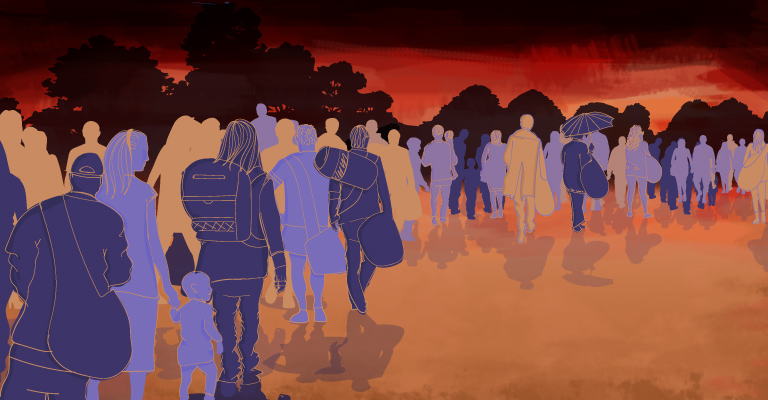
In the eight years since it formed, Boko Haram has killed more than 20,000 people and caused millions more to flee. Violent conflicts are well-known major causes of forced displacement around the world, but natural disasters also have a large impact on human migration. Disasters were responsible for about 77 percent of new global internal displacements in 2016.
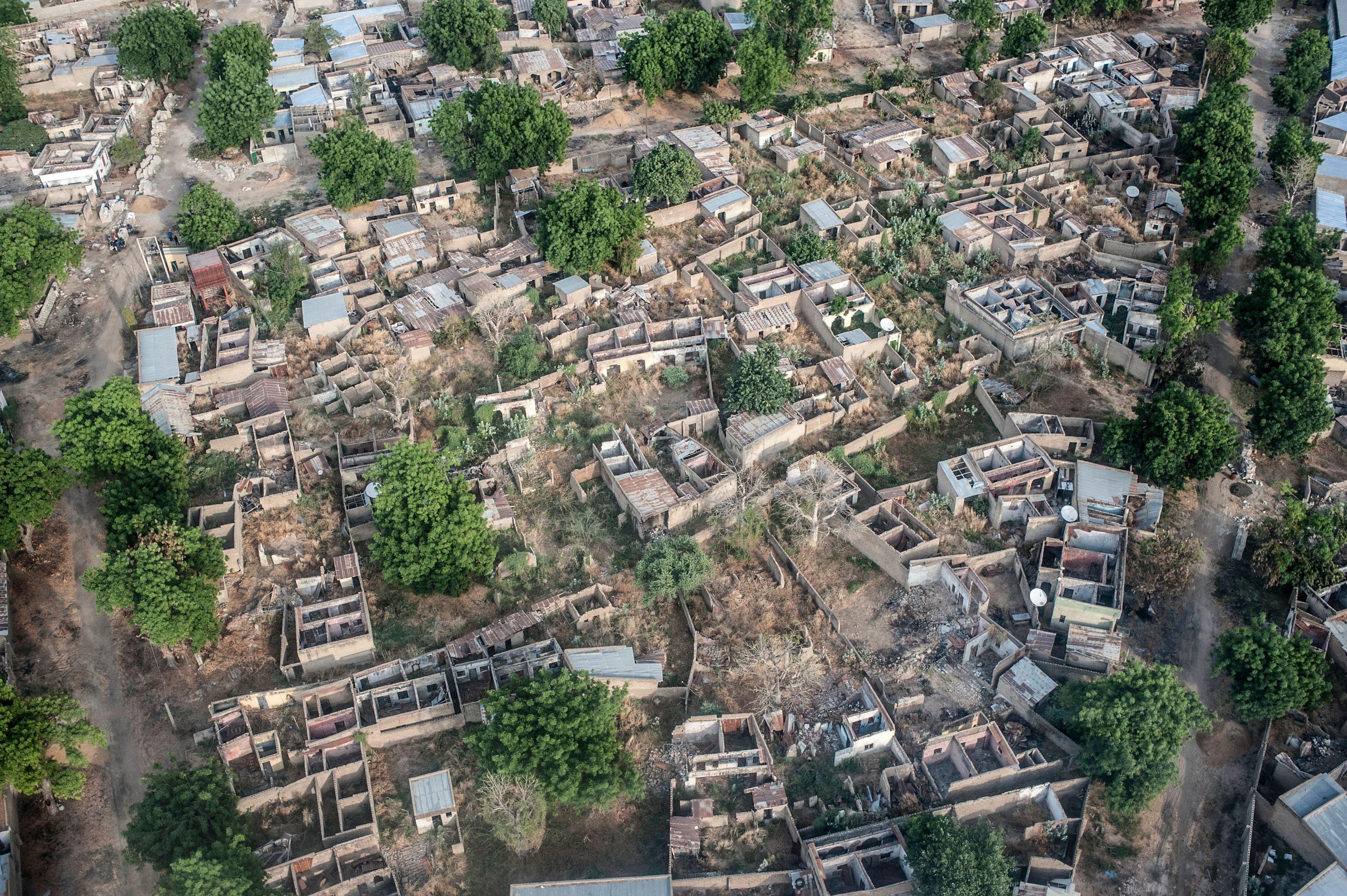
Unrest and destruction caused by Boko Haram in Nigeria
The Space Between IDPs and Refugees
According to the Internal Displacement Monitoring Centre’s (IDMC) 2017 Global Report on Internal Displacement, “weather-related hazards, in particular storms, brought on the majority of all new disaster displacements in 2016,” an escalating trend. From 2008 to 2016, weather-related disasters caused about 196 million new internal displacements.
The United Nations Office for the Coordination of Humanitarian Affairs defines internally displaced persons, or IDPs, as those who have been forced to leave their homes because of (or in order to avoid) “the effects of armed conflict, situations of generalized violence, violations of human rights or natural or human-made disasters, and who have not crossed an internationally recognized State border.”
Both refugees and IDPs are forced migrants, but refugees cross an international border while IDPs remain in their own country.
Unique Challenges for IDPs
Tazreena Sajjad, professorial lecturer in the Global Governance, Politics, and Security Program in the School of International Service at American University, said that defining and identifying IDPs is challenging for a number of reasons. First, she said, internationally recognized state borders are essentially “imaginary political lines,” which may be less obvious to people who want only to flee from danger.
IDPs may not see the technical distinction between themselves and refugees, but they can also become refugees as a dangerous situation or natural disaster progresses and they are forced even farther from their homes, perhaps by crossing a border.
But plenty of people can’t make it across a border, and there are plenty of reasons why. Neighboring countries may consider them a security threat, or may not have the resources to accept them. They may lack money, documentation, or transportation, or they may be hampered by illness, pregnancy, or disability. The borders around their own country may be increasingly militarized. Natural disasters may force them to flee their homes, but political, physical and social barriers often prevent them from leaving their country.
Sajjad said IDPs are often forgotten, lost within their own states. The needs of refugees are more noticeable to the international community because they physically occupy space within another country.
The length of an IDP’s displacement is determined by the cause of migration. Cindy Huang, senior policy fellow at the Center for Global Development, noted at a talk hosted by the Center for Strategic and International Studies that more than 50 percent of IDPs are forced from their home for three or more years. After being displaced for longer than this time period, the average length of a person’s displacement is 20 years.
The Office of the United Nations High Commissioner for Human Rights (OHCHR) has warned that IDPs are “subject to heightened vulnerability.” IDPs struggle to find jobs in their host communities. They often find themselves in unfamiliar regions of their country, separated from their social networks and dependent on assistance from the state, while also competing against members of their host communities for access to basic resources like shelter, food, and health care.
Where Do Displacements Happen?
In 2016, the majority of new, disaster-related internal displacements occurred in the southern and eastern regions of Asia, though island states like Cuba, Fiji, and the Philippines had the highest percentage of their population displaced due to disasters.
In the Philippines, for example, typhoons Haima and Nina were responsible for almost 5 million IDPs. Since 2008, the country has averaged 3.7 million disaster-induced displacements per year, mostly due to typhoons. Typhoon Haiyan in 2013 caused 6,000 deaths, the destruction of more than a million homes, and the displacement of more than 4 million people.
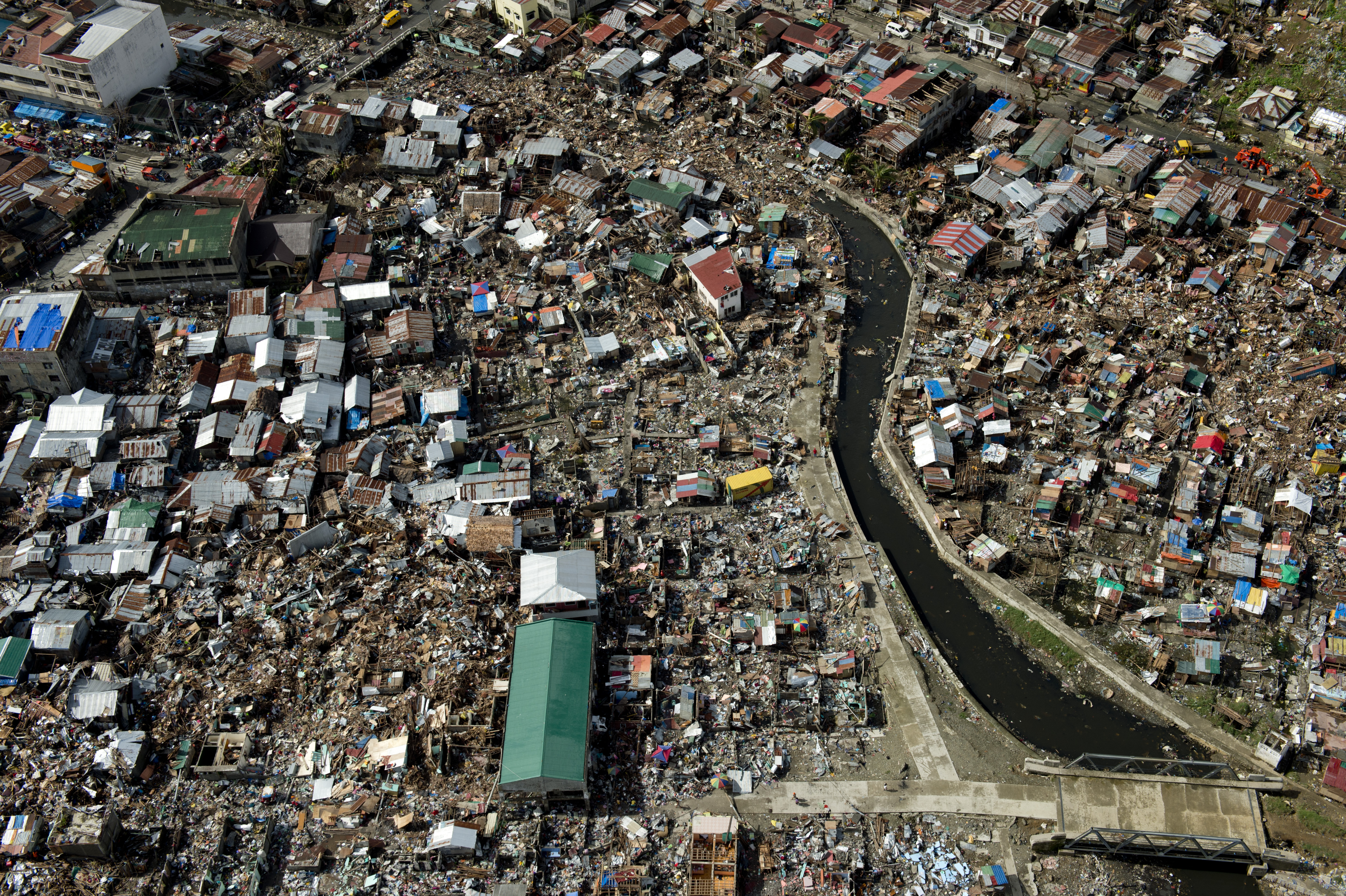
Aftermath of the Super Typhoon Haiyan in Philippine city of Tacloban in 2013
Developed countries are not exempt from mass displacement due to natural disasters. The Internal Displacement Monitoring Centre says the United States had the fifth-highest number of internal disaster-related displacements in 2016. The majority of those displacements were attributed to Hurricane Matthew.
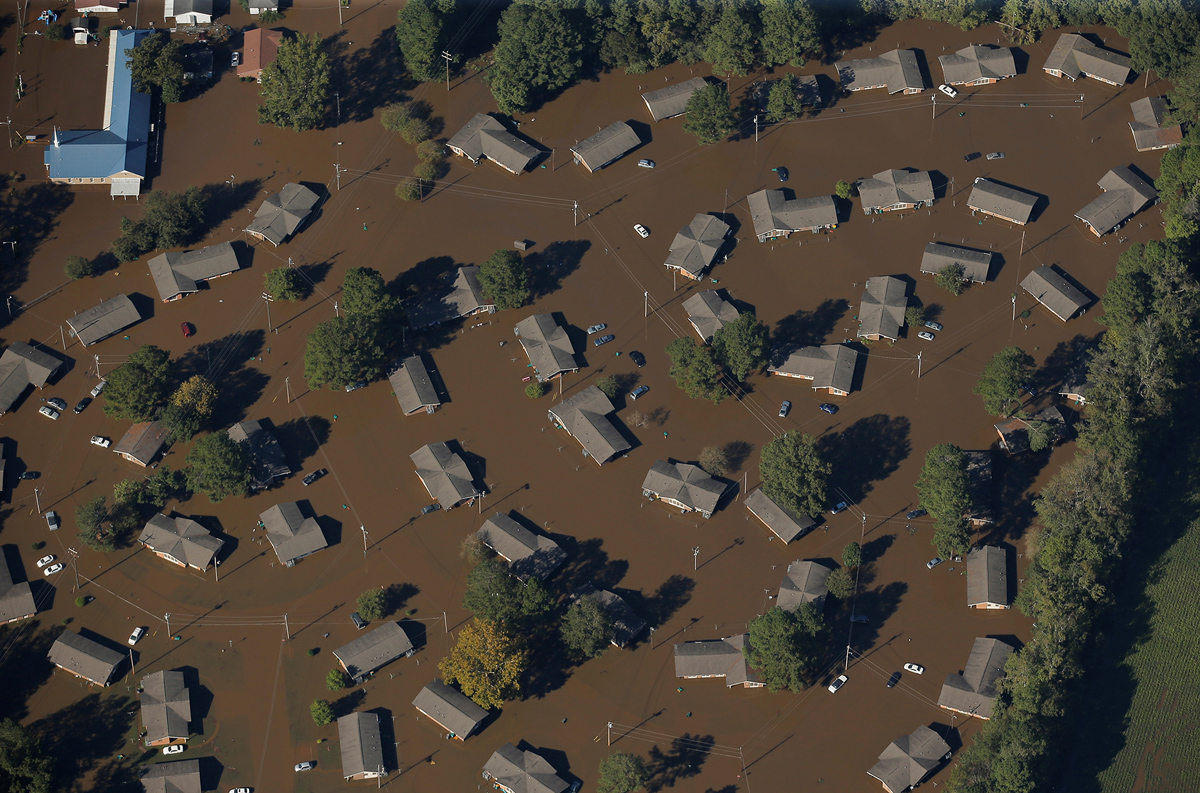
Flood waters from 2016’s Hurricane Matthew run through street in Lumberton, North Carolina
Even as the United States recovers from past disasters, extreme weather events continue to cause Americans to leave their homes. In 2017, before hurricanes Harvey and Irma, more than 250,000 people were displaced in the United States due to natural disasters. Though the exact number of people displaced by these hurricanes isn’t yet known, multiple state governments encouraged millions of their citizens to evacuate.
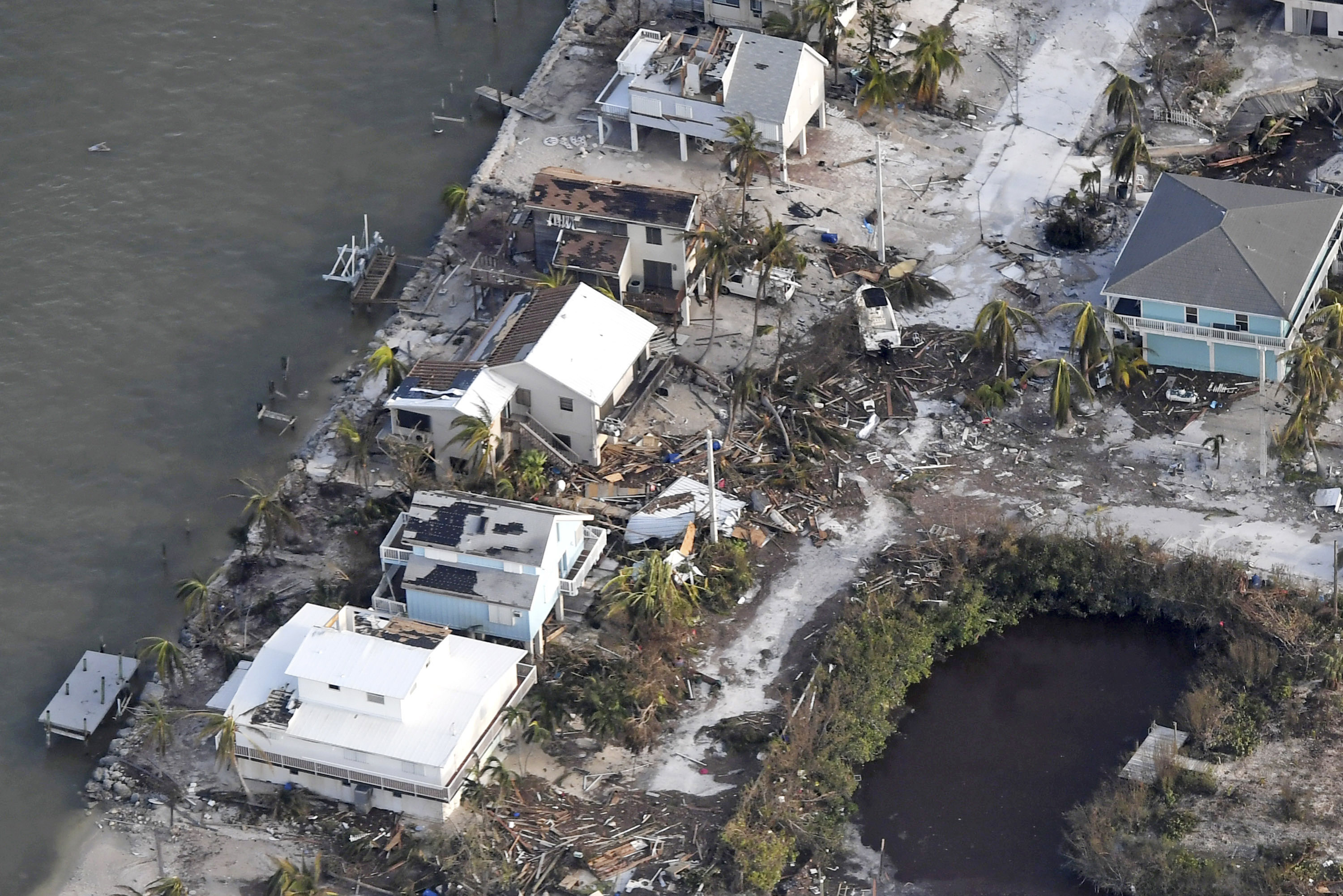
Damage caused by Hurricane Irma along Florida coast in 2017
Climate change, as well as the geopolitical climate, are evolving dynamics that can exacerbate situations caused by conflicts and disasters.
Kate Gough, migration program coordinator at the Center for Global Development, said climate change has the ability to influence both extreme weather events and landscapes. Water availability, land fertility, forest depletion, and seasonal patterns are all affected by climate change. These changes in resources then affect people’s livelihoods in a way that could contribute to more forced displacements.
Sajjad warned that climate change is often associated with socioeconomic deprivation and political turbulence. In order to address the specific needs of IDPs, the international community will need to continue to broaden their understanding of the forms and causes of forced displacement.
Who Is Responsible?
Though refugees receive special protection under international law, IDPs do not. They should however, according to the UN’s Guiding Principles on Internal Displacement, “enjoy, in full equality, the same rights and freedoms under international and domestic law as do other persons in their country.”
There is no single international agency tasked with organizing assistance for IDPs. Instead, the government of the country where displacement occurs bears the primary obligation for both assistance and protection. The “international community’s role is complementary” to the role of the state, according to the OHCHR.
For natural disasters, the state must play the leading role in the recovery efforts. In the cases of hurricanes Harvey and Irma, for example, it is expected that a combination of funding from the federal government’s flood insurance program, private homeowners’ insurance, and government aid will be used to repair the damages. Other costs will fall on the individuals themselves. In other countries where the state is not able to provide support, the international community must establish protocol for delivering aid despite complicated geographic and political landscapes.
When sharing our content, please cite us as “IR Online, American University’s International Relations online program.“


